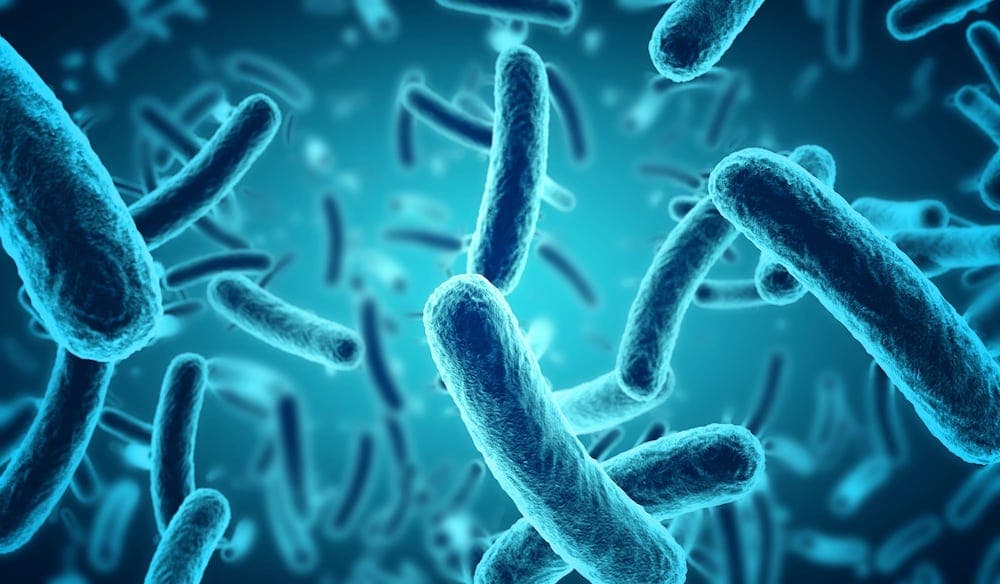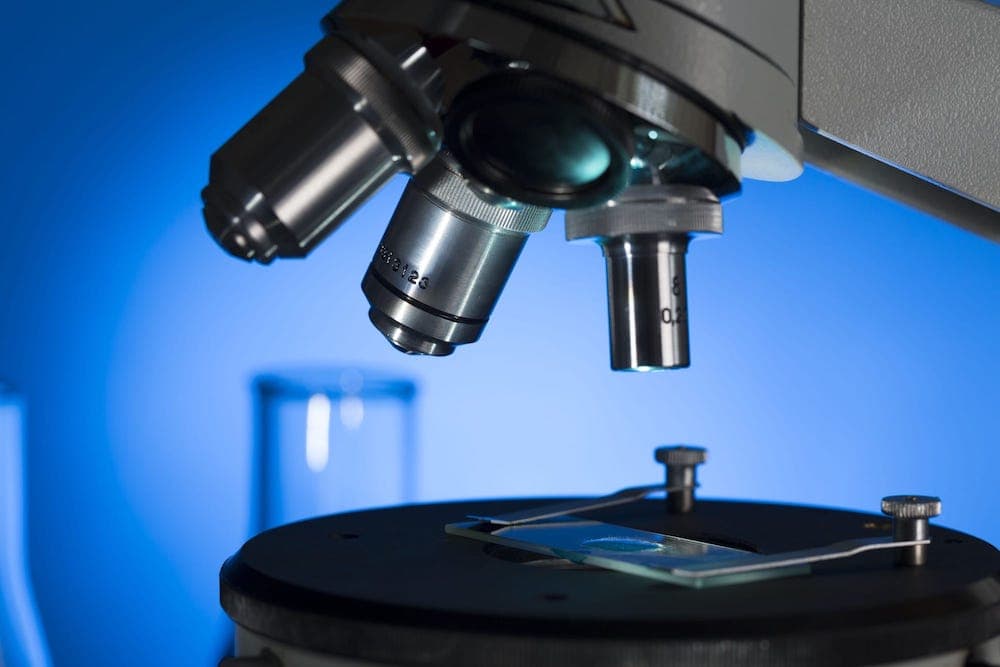Learn : Health & Wellness
Microbes in the Gut
When pet parents think of their pet’s gut, it may be to marvel at its resiliency. Companion animals are known to occasionally consume pet toys and household items, sometimes causing headaches for their pet parents. However, their gastrointestinal tracts, which are composed of all parts involved in the consumption of food including the mouth, esophagus, stomach, and intestines,
The animal gastrointestinal microbiota, usually referring to the stomach and intestines, is comprised of an assortment of microorganisms, including bacteria, viruses, fungi, and other microorganisms. To date, scientists have an enhanced understanding of resident bacterial populations, which are the most prevalent class.
This knowledge is rapidly increasing, exceptionally so for dogs and cats, due to technological advances in DNA sequencing technologies and an increased awareness of the microbiota’s importance in humans1.
Studies have revealed that factors like diet2,3, age4, and intestinal disease5 can alter the composition of the microbiome. While more studies are needed to better define how the microbiome changes during disease and how it responds to variations in environmental or dietary conditions, the primary phyla in your pet’s gut are Firmicutes, Bacteroidetes, Actinobacteria, and Proteobacteria6,7.
For a quick biology recap: phylum is the 3rd highest taxonomic rank8 used to define organisms and is quite broad. These phyla are commonly found across other mammals as well, such as humans.
It is generally assumed that these phyla serve a similar purpose in the gut microbiota across animal species, but this idea has been challenged in recent years9. For example, companion animals like dogs and cats are also known to harbor bacteria from the Fusobacteria6 phylum, which (although previously recognized as part of the human microbiome) have more recently been associated with disease-causing bacteria.
Since these types are not present in humans, the functional relevance of Fusobacteria in animal microbiomes requires further study. However, it is still accepted that the overall function of the microbiota is similar across most animals.
But what are the roles of specific bacteria in the animal gut microbiota of healthy individuals? How are members of each phylum contributing to the overall function and health of the organism they colonize? The more we understand about how the microbiome functions, the better we may be able to diagnose and treat imbalances in its composition and maintain gut health. Here, the four biggest and best understood bacterial phyla are described, based on what is currently known from scientific study.
Firmicutes
Firmicutes10 (fir-mic-QUE-
Some of these names may sound familiar because multiple human pathogens belong to these genera: Bacillus cereus, which can cause food poisoning, or Clostridium
For instance, species found in dogs are generally not found in humans12. In the guts of dogs and cats6,7, Firmicutes are found in all parts of the gastrointestinal tract, although in dogs they are found at far less abundance in the stomach than the intestines.
Some studies have found that Firmicutes are associated with obesity13,14, although others have found no correlation13,15. This is still not well-understood and scientists are trying to resolve these differences. Studies in humans and mice16 have shown that consuming high-calorie diets stimulate
Bacteria from this phylum could aid in the sequestration of energy from carbohydrates. Thus, a diet rich in carbohydrates may increase the number of Firmicutes in the microbiota, which
Bacteroidetes
Similar to Firmicutes, bacteria of the phylum Bacteroidetes (back-tear-
Although other members of Bacteroidetes are not obligate anaerobes and can survive higher oxygen concentrations, they are similarly found in the colon over other parts of the gastrointestinal tract18. There the bacteria help their host digest otherwise indigestible carbohydrates.
In humans and mice, the ratio of Firmicute
Conversely, increased numbers of Bacteroidetes are associated with a leaner weight profile. This has also been shown in dogs, as a 2017 study3 found that dogs fed a high-protein, low-carbohydrate diet had more Bacteroidetes than Firmicutes in their microbiome. The ratio of these populations shifted significantly in obese dogs compared to lean dogs to favor Bacteroidetes. This suggests that increased Bacteroidetes populations are correlated with metabolic benefits, particularly in regard to energy storage.
Proteobacteria
Of all the bacterial phyla that make up the gut microbiota of healthy dogs and cats, the Proteobacteria (PRO-tee-o-bak-TEAR-ee-ah) are the most diverse9, albeit less prominent than Firmicutes or Bacteroidetes. Some notable pathogens belong to this phylum, such as Escherichia coli, which is known for frequent outbreaks of human disease, as well as some non-pathogenic Cyanobacteria species19. Cyanobacteria are generally thought of in relation to plants, but they may also play a role in the animal microbiome to generate vitamin B and K from the food we eat.
How are Proteobacteria contributing to the health of their host? Research investigating their specific role is still lacking, but scientists have made interpretations based on the function of specific genes observed in bacterial sequencing. Most of these studies have been conducted in humans or mice, so their application to dogs or cats is still unknown.
However, it is thought that Proteobacteria help their host metabolize protein, carbohydrates, and vitamins9. Studies have also shown that some Proteobacteria genera are among the first to colonize the gut after birth20 and lower the oxygen levels to allow other bacteria that cannot survive in high oxygen environments to inhabit these tissues.
Actinobacteria
For anyone who loves the smell of soil, thank Actinobacteria21 (ack-TIN-o-bak-TEAR-ee-ah). Bacteria from this phylum are best known for their contribution to decomposition in soil environments, but they are often found in the animal gut microbiome as well as other areas of the body such as skin, mouths, and genital tracts.
Members of the Actinobacteria genus Bifidobacterium22 are believed to be among the first to colonize the gastrointestinal microbiota. They are also included in a number of foods as active ingredients, including probiotics for dogs, cats, and humans.
More intensive studies in companion animals are needed to better understand the role Bifidobacterium play in host health. However, human and mouse studies have found numerous health benefits of Bifidobacterium.
Bacteria from this genus have been described as protective against colorectal cancer23, diarrhea24, and inflammatory bowel disease25. Bifidobacterium
What Can We Learn From This?
Studies exploring the function of the microbiome in pets can help us understand not only the similarities to
References
1. Thursby, E. & Juge, N. Introduction to the human gut microbiota. Biochem. J 474, 1823–1836 (2017).
2. Singh, R. K. et al. Influence of diet on the gut microbiome and implications for human health. J. Transl. Med. 15, 73 (2017).
3. Li, Q., Lauber, C. L., Czarnecki-Maulden, G., Pan, Y. & Hannah, S. S. Effects of the Dietary Protein and Carbohydrate Ratio on Gut Microbiomes in Dogs of Different Body Conditions. MBio 8, (2017).
4. Odamaki, T. et al. Age-related changes in gut microbiota composition from newborn to centenarian: a cross-sectional study. BMC Microbiol. 16, 90 (2016).
5. Lane, E. R., Zisman, T. L. & Suskind, D. L. The microbiota in inflammatory bowel disease: current and therapeutic insights. J. Inflamm. Res. 10, 63–73 (2017).
6. Hooda, S., Minamoto, Y., Suchodolski, J. S. & Swanson, K. S. Current state of knowledge: the canine gastrointestinal microbiome. Anim. Health Res. Rev. 13, 78–88 (2012).
7. Minamoto, Y., Hooda, S., Swanson, K. S. & Suchodolski, J. S. Feline gastrointestinal microbiota. Anim. Health Res. Rev. 13, 64–77 (2012).
8. Wikipedia contributors. Taxonomic rank. Wikipedia, The Free Encyclopedia (2018). Available at: https://en.wikipedia.org/w/index.php?title=Taxonomic_rank&oldid=871031452. (Accessed: 5th December 2018)
9. Moon, C. D., Young, W., Maclean, P. H., Cookson, A. L. & Bermingham, E. N. Metagenomic insights into the roles of Proteobacteria in the gastrointestinal microbiomes of healthy dogs and cats. Microbiologyopen e00677 (2018).
10. Firmicutes - an overview | ScienceDirect Topics. Available at: https://www.sciencedirect.com/topics/medicine-and-dentistry/firmicutes. (Accessed: 5th December 2018)
11. Jandhyala, S. M. et al. Role of the normal gut microbiota. World J. Gastroenterol. 21, 8787–8803 (2015).
12. Coelho, L. P. et al. Similarity of the dog and human gut microbiomes in gene content and response to diet. Microbiome 6, 72 (2018).
13. Million, M., Lagier, J.-C., Yahav, D. & Paul, M. Gut bacterial microbiota and obesity. Clin. Microbiol. Infect. 19, 305–313 (2013).
14. Turnbaugh, P. J., Bäckhed, F., Fulton, L. & Gordon, J. I. Diet-induced obesity is linked to marked but reversible alterations in the mouse distal gut microbiome. Cell Host Microbe 3, 213–223 (2008).
15. Arumugam, M. et al. Enterotypes of the human gut microbiome. Nature 473, 174–180 (2011).
16. Ley, R. E., Turnbaugh, P. J., Klein, S. & Gordon, J. I. Microbial ecology: human gut microbes associated with obesity. Nature 444, 1022–1023 (2006).
17. Krajmalnik-Brown, R., Ilhan, Z.-E., Kang, D.-W. &
18. Johnson, E. L., Heaver, S. L., Walters, W. A. & Ley, R. E. Microbiome and metabolic disease: revisiting the bacterial phylum Bacteroidetes. J. Mol. Med. 95, 1–8 (2017).
19. Di Rienzi, S. C. et al. The human gut and groundwater harbor non-photosynthetic bacteria belonging to a new candidate phylum sibling to Cyanobacteria. Elife 2, e01102 (2013).
20. Shin, N.-R.,
21. Sequence Your Microbiome - Gut Flora, Microbiota. Available at: https://shop.ubiome.com/pages/actinobacteria. (Accessed: 5th December 2018)
22. O’Callaghan, A. & van Sinderen, D. Bifidobacteria and Their Role as Members of the Human Gut Microbiota. Front. Microbiol. 7, 925 (2016).
23. Le Leu, R. K., Hu, Y., Brown, I. L., Woodman, R. J. & Young, G. P. Synbiotic intervention of Bifidobacterium
24. Chenoll, E. et al. Complete Genome Sequence of Bifidobacterium
25. Venturi, A. et al. Impact on the composition of the



 Microbiome And Pet Health
Microbiome And Pet Health
 Evolution of Microbiome Research
Evolution of Microbiome Research
 Microbiome in Nutrition
Microbiome in Nutrition
 Cancer & the Microbiome
Cancer & the Microbiome
 The Link Between Gut Microbes and Your Pet's Brain
The Link Between Gut Microbes and Your Pet's Brain